What We’re Reading – July 2023
Speaking of the importance of flexibility, a Harvard Business Review survey of 5,700 onsite US workers in industries like manufacturing, transportation and health care found a mismatch between the flexibility options that companies provide and what employees actually want.
What companies are offering: The most common flexibility options that onsite workers reported were relaxed dress code (55%), flexible start and end times (33%) and choice over hours they worked (31%).
What onsite workers want: When asked what flexibility options they would change jobs to get, onsite workers reported increased paid time off or vacation time (57%) and four-day work weeks (44%).
Employee engagement matters: People with engaging work and one week of vacation report 25% higher well-being than actively disengaged workers who have six or more weeks of vacation, according to Gallup research.
- Among those with fully onsite work responsibilities, Gallup finds that those with a four-day work week report lower active disengagement and higher overall well-being.
Solutions Center: Flexibility Working Group – July 2023
Lack of flexibility is a top workforce challenge for employees, according to a recent report released by the MI. To address this concern and help employees attract and retain more workers, the MI has been convening manufacturing leaders to discuss flexibility solutions, identify what’s working and share insights. Here are some of the key takeaways.
The shop floor challenge: Flexible work arrangements for shop floor workers are different from those offered to office staff or remote workers, as manufacturers must fulfill in-person production requirements and timelines.
- Companies have gotten creative, testing out different options including compressed work weeks, rotating schedules, flex scheduling, shift swapping and phased retirements.
A data-driven approach: Participants in the MI’s working group conducted surveys to gauge the types of flexibility their employees wanted. Companies then assessed production needs before determining what flexibility options they would test, sometimes with the help of a consultant.
- One company collected data on recruitment and retention as part of their pilot to help evaluate its effectiveness.
- Other companies utilized employee engagement surveys to assess the success of their pilots.
Support system: Companies in the working group talked about the importance of creating support structures for flexibility plans.
- For example, one company hired a training and scheduling coordinator to manage their new systems. Others employed technology platforms to organize shifts.
- Supervisors also needed to be trained to handle new systems and manage flexibility requests while meeting production demands, the participants noted.
Stay tuned: The MI is planning to release a white paper based on the working group discussions in the fall.
Parts Life Helps Workers Achieve the American Dream
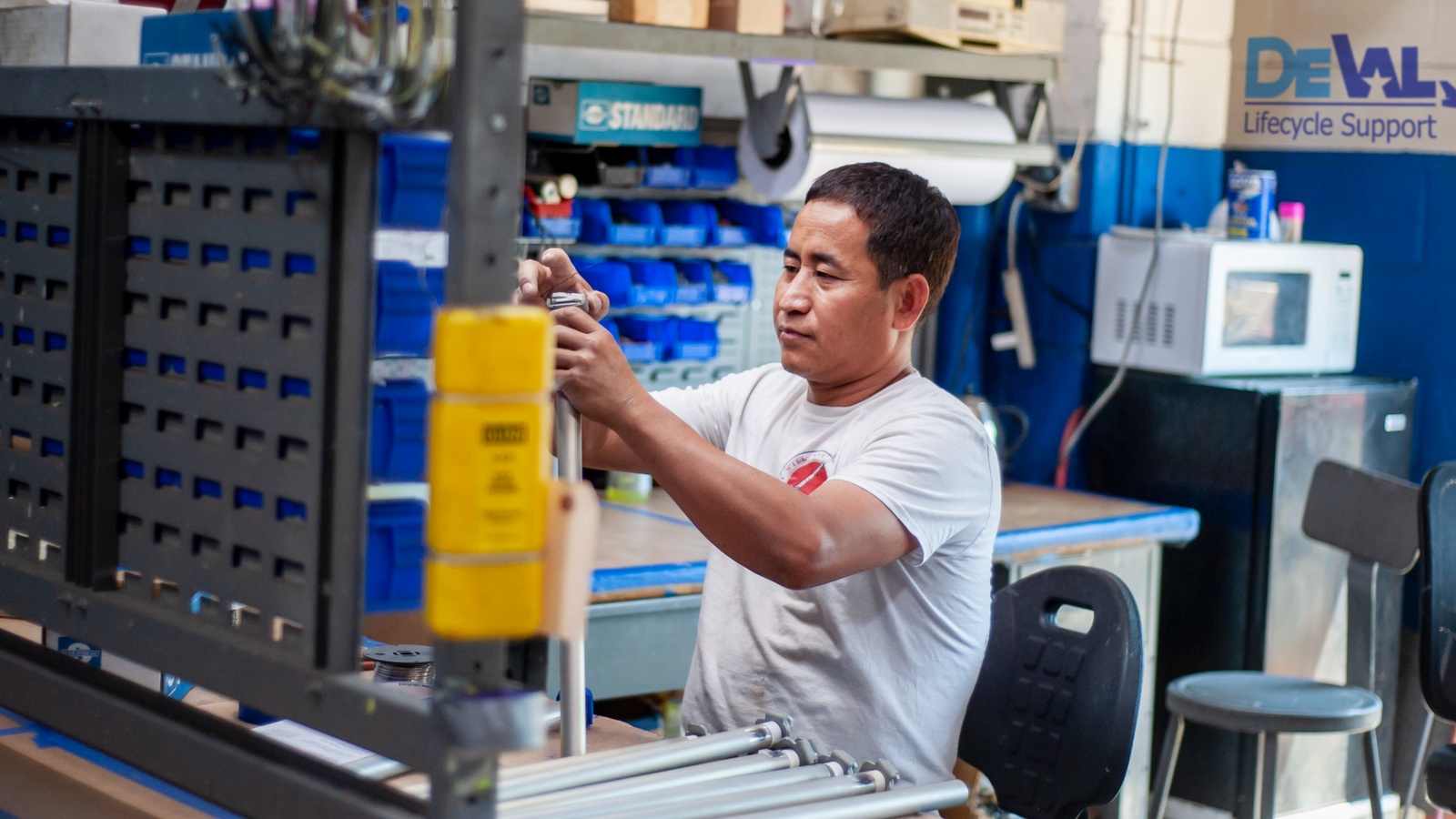
Attracting and retaining a quality workforce has long been a top business challenge for manufacturers. The Parts Life Inc. family of companies is no different—but its variety of workforce strategies have led to considerable hiring success.
The Moorestown, New Jersey–based manufacturing group—which consists of engineering firm Parts Life, armament support manufacturer DeVal Lifecycle Support and electrical manufacturer LC Engineers—offers a number of inducements for new and existing workers, President and CEO Sam Thevanayagam explained. Together, they are helping the companies, and their workers, thrive.
The plan: “We create an environment where [people] can achieve their God-given potential,” Thevanayagam told us.
- After being inspired by several books—David Docusen’s “Neighborliness” and Hernando De Soto’s “The Mystery of Capital” among them—Thevanayagam sought to provide workers with a range of benefits, some of them unusual for an employer to offer.
- “In ‘Neighborliness,’ [Docusen] realized people need education, a job, health care and housing to be successful and build community,” Thevanayagam said. “So we are making sure we are offering these things to our people.”
- For example, Parts Life recently devised a financial program called Help U Buy, which helps workers buy their first homes.
Helping the whole employee: Parts Life offers its employees a variety of educational opportunities to help them advance at the company and better their lives.
- Approximately 40% of the workforce at DeVal Lifecycle Support is made of immigrants to the U.S., according to Thevanayagam.
- To help employees learn the language, the Parts Life companies offer no-cost formal English courses with a trained Teaching English as a Second Language instructor. “It’s helped them not just at work, but in being better neighbors, parents and citizens, too,” Thevanayagam
- The businesses also offer free basic financial management classes for workers.
Upskilling: Several years ago, when a nationwide shortage of trained machinists began to impede the companies’ operations, Thevanayagam devised a fix. Parts Life would “create” its own machinists.
- “As difficult as it is to find a trained machinist, it’s even harder to find teachers” for machining, Thevanayagam said. Once Parts Life found and hired a machinist instructor, the company had him begin training other employees.
- “Now he’s working with about 10 of our machinists—upskilling them, teaching them everything” they need to know, Thevanayagam said. “He’s sort of like a pitching coach, working with them on their technique and speed. That’s the model we’re using. … It really increases employee engagement and retention.”
Talent in the community: The Parts Life family of companies is also building relationships with local schools in an effort to find potential hires.
- These include partnerships with technical high schools that offer welding and machining training and partnerships with local colleges and universities to source engineering and business talent.
- “I look at [the partnerships] as building an entire ecosystem,” Thevanayagam said. “These are ways to be able to recruit and retain good people.”
Veterans: Lastly, Parts Life has had success in hiring from another pool: veterans. One of the reasons? It is willing to provide needed accommodations.
One recent veteran hire, a former U.S. Marine, had post-traumatic stress disorder and a substance-abuse problem when he was brought on board and “we were able to … get him counseling and get him a support system through veterans organizations,” Thevanayagam said.
- “We try to be veteran-ready,” said Thevanayagam, adding that veterans now account for about 3% to 5% of Parts Life companies’ workforces. “These are people who have sacrificed for our country—and I want to make sure we are an environment where they can achieve.”
The last word: “The fact that we’re able to create meaningful work for people so they have the ability to … become part of the American dream—it’s a big part of who we are,” said Thevanayagam.
Read more: As the 501(c)3 nonprofit workforce development and education affiliate of the National Association of Manufacturers, the Manufacturing Institute is a trusted adviser to manufacturers, equipping them with solutions to address the toughest workforce issues. Visit the MI’s site for workforce solutions insights and resources.
Make the Most of MFG Day 2023
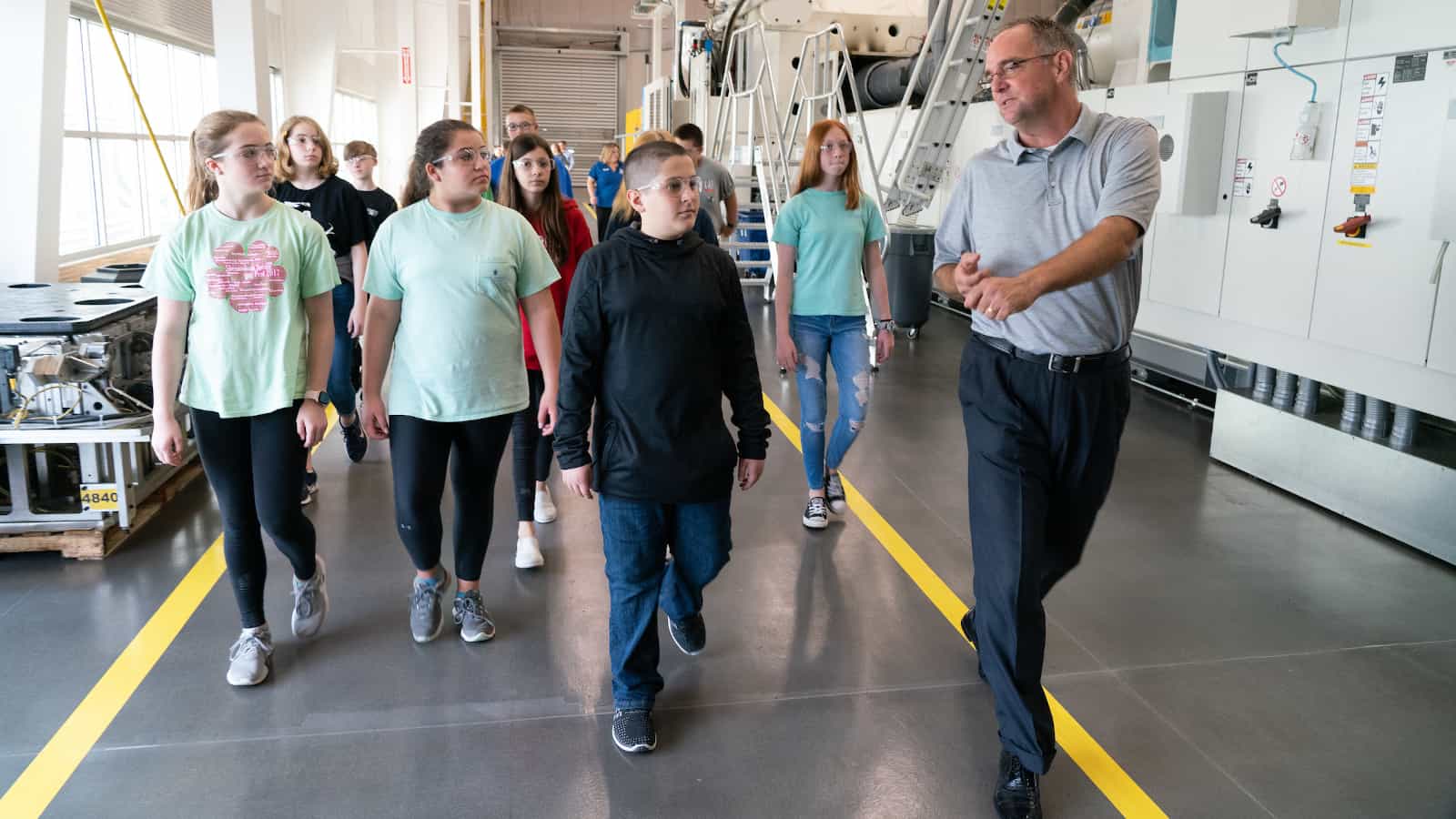
This year’s biggest celebration of manufacturing is coming up soon in October—and manufacturers who want to take part should start planning now.
On MFG Day—Friday, Oct. 6—and throughout the rest of the month, manufacturing companies, community colleges and associations will have their best opportunity to show young people all the industry has to offer them, via factory visits, career fairs and more. So how can companies make the most of it?
Recently, the Manufacturing Institute—the NAM’s 501(c)3 nonprofit workforce development and education affiliate—hosted a webinar to share tips, insights and resources for companies interested in putting on their own MFG Day events.
The participants: The webinar, titled “Making the Most of Your Event,” was hosted by MI Director of Student Engagement Jen White. It included presentations and insights from GenMet Corporation CEO Eric Isbister and American Honda Motor Co. Assistant Manager of Government and Industry Relations Meredith Reffey.
Find your event: Manufacturers can engage in a range of different kinds of events—from career fairs to school visits to challenges and competitions.
- The most common MFG Day event is a facility tour or open house, which allows students, educators and parents to see firsthand the work that manufacturers do every day.
- But whether a manufacturer opens their doors for a tour or designs a “Parents’ Night” for family members, the most important thing is to find an authentic way to connect with community members, the panelists recommended.
- “If you are reaching students and educators, parents, even community members, then you’re … growing awareness of manufacturing and hopefully exciting folks about potentially working in the industry,” said White.
Show yourself: According to Isbister, the first priority of an MFG Day event should simply be to present careers in manufacturing as a viable option for community members.
- “We’ve had over 3,000 students tour here, and our goal … is to let them know that manufacturing exists,” said Isbister. “Most of them don’t, most parents don’t. Most teachers and guidance counselors and school board members don’t have the faintest idea of what we do. And when they walk in the building, their jaws hit the ground, and they’re excited to see things.”
Expand the circle: While engaging students is important, companies should be sure to invite others in the community as well, Isbister said.
- “Don’t just invite students [to your event], but teachers and guidance counselors and administrative people and school board members,” said Isbister. “If you get a student, you got one. If you get a teacher, you got 24. If you get a school board member, you’ve got the person with the pen who can authorize things—and that’s important, too.”
Know your audience: According to Reffey, it’s critical to meet audiences where they are.
- One of the most important lessons Honda has learned from past events is that high school audiences respond well to hands-on activities—particularly those that have an element of competition. By offering activities that the audience enjoys, manufacturers can amp up excitement and promote more engagement.
- “High school students can act very ‘too cool’—but if you set things up as a competition, they break out of their shells,” said Reffey. “Put a racing simulator in front of ’em, they seem to come unglued. They get so excited to participate.”
Get involved: The MI has a range of resources designed to help manufacturers create effective events—and White emphasized that those resources are open and available to all manufacturers interested in using them.
- “Being involved with MFG Day, hosting events, using the branding that’s available on the website, registering your events on MFGday.com and all of our resources and toolkits are 100% free to you,” said White. “You do not have to be an MFG Day sponsor. You do not have to be an NAM member. It is 100% free for you to use. We want as many companies and partners of manufacturers involved in MFG Day as possible.”
Learn more: Manufacturers are encouraged to reach out with any questions to [email protected].
Immigration Is a Personal Cause for This Manufacturing Leader

For Fernando Torres, the vice president of operations at thermoplastics manufacturer Greene Tweed, the issue of immigration is personal. In 1996, at the age of 16, Torres immigrated to the United States. He was undocumented for a time, and he was forced to figure out how to stay afloat.
His story: Alone, without stable residency and barely speaking the language, Torres had a harrowing start in the U.S. But he worked his way through community college, where he excelled in math courses even though he wasn’t yet fluent in English. Torres attributes his love for math and science to his grandfather, who he says is the smartest man he’s ever met.
- “I had a difficult situation at the age of 16 in a new country without knowing the culture or the language, asking, what am I going to do?” said Torres. “Living in this country, it’s the country of opportunities, so I had to find ways to make it work and pursue the American dream.”
- “But, as an undocumented person, the jobs available were not pretty. Whether I was washing dishes at a seafood restaurant or cutting the lawns in Arizona in the middle of the 120-degree- weather summers, I just had to find a way to survive.”
Entering the industry: After community college, Torres was accepted into Arizona State University’s program for aerospace engineering—and eventually, he found a place in the commercial sector at Greene Tweed. Today, he’s a U.S. citizen, and he’s just as passionate as ever about the value of immigration.
Immigration and manufacturing meet: Torres has seen the skills gap in manufacturing firsthand, and he knows how difficult it is to fill critical jobs. That’s one reason why immigration is so important to the manufacturing industry, he pointed out.
- “There is a shortage of people,” said Torres. “Skilled laborers are very difficult to find in our country, and retirements are outpacing anyone that’s coming in. There’s not enough people to run our factories—and if we want the economy to grow, we need people to grow it.”
Read the full story here.
Anheuser-Busch Supports Partners, Workers
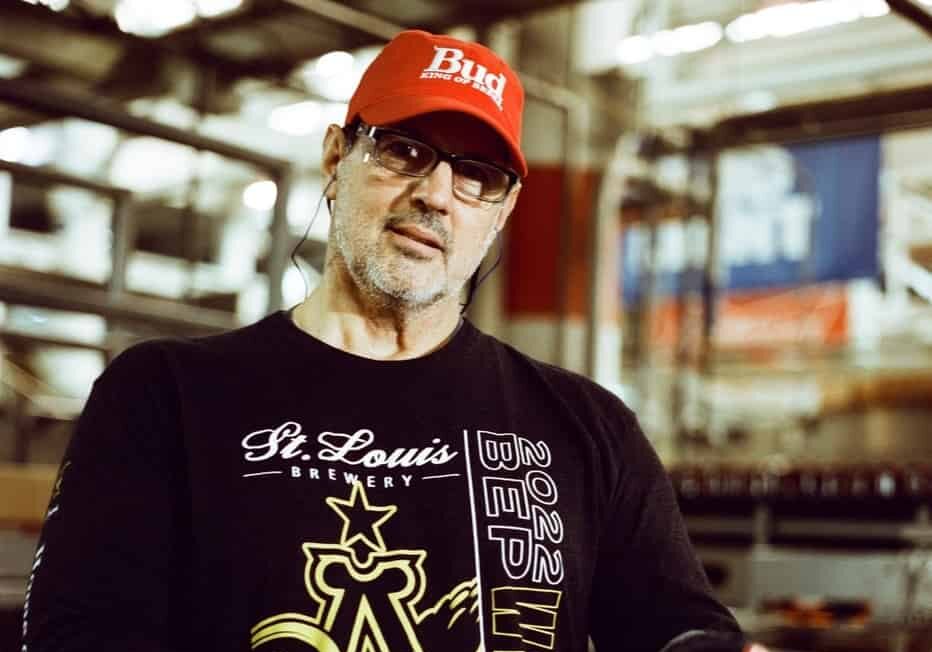
Anheuser-Busch has a solid history of supporting its U.S. facilities and partners, and now it’s expanding those efforts.
What’s going on: The beer giant will give financial and other assistance to its wholesalers, distributors and frontline workers, it announced in a memo and regulatory filing with the Securities and Exchange Commission this month.
- Aid to partners and workers will include wholesaler financial support and sales incentive payments, reimbursements for freight and fuel surcharges and extended lines of credit though the end of the year, as well as financial assistance for local marketing efforts.
“Beer is for everyone”: The financial announcements came just days before the release of Bud Light’s “Easy to Drink, Easy to Enjoy” campaign.
- Other components of the campaign are weekly $10,000 giveaways, Fourth of July weekend rebates and chances to win tickets to local shows in the national Bud Light Backyard Tour, which will feature country music artists Seaforth and Tyler Braden.
Origin story: Today Anheuser-Busch launches its “That’s Who We Are” effort to show where the company’s beers come from and who’s involved in making them. More than 140 growers, employees, wholesalers and other partners participated in the filming of the campaign’s first ad.
The last word: “As we move forward, we will focus on what we do best—brewing great beer and earning our place in moments that matter to you,” Anheuser-Busch CEO Brendan Whitworth said in the memo. “We are a beer company, and beer is for everyone.”
Anheuser-Busch Supports Partners, Workers

Anheuser-Busch has a solid history of supporting its U.S. facilities and partners, and now it’s expanding those efforts.
What’s going on: The beer giant will give financial and other assistance to its wholesalers, distributors and frontline workers, it announced in a memo and regulatory filing with the Securities and Exchange Commission this month.
- Aid to partners and workers will include wholesaler financial support and sales incentive payments, reimbursements for freight and fuel surcharges and extended lines of credit though the end of the year, as well as financial assistance for local marketing efforts.
“Beer is for everyone”: The financial announcements came just days before the release of Bud Light’s “Easy to Drink, Easy to Enjoy” campaign.
- Other components of the campaign are weekly $10,000 giveaways, Fourth of July weekend rebates and chances to win tickets to local shows in the national Bud Light Backyard Tour, which will feature country music artists Seaforth and Tyler Braden.
Origin story: Today Anheuser-Busch launches its “That’s Who We Are” effort to show where the company’s beers come from and who’s involved in making them. More than 140 growers, employees, wholesalers and other partners participated in the filming of the campaign’s first ad.
The last word: “As we move forward, we will focus on what we do best—brewing great beer and earning our place in moments that matter to you,” Anheuser-Busch CEO Brendan Whitworth said in the memo. “We are a beer company, and beer is for everyone.”
Creators Wanted Makes an Impact at SkillsUSA
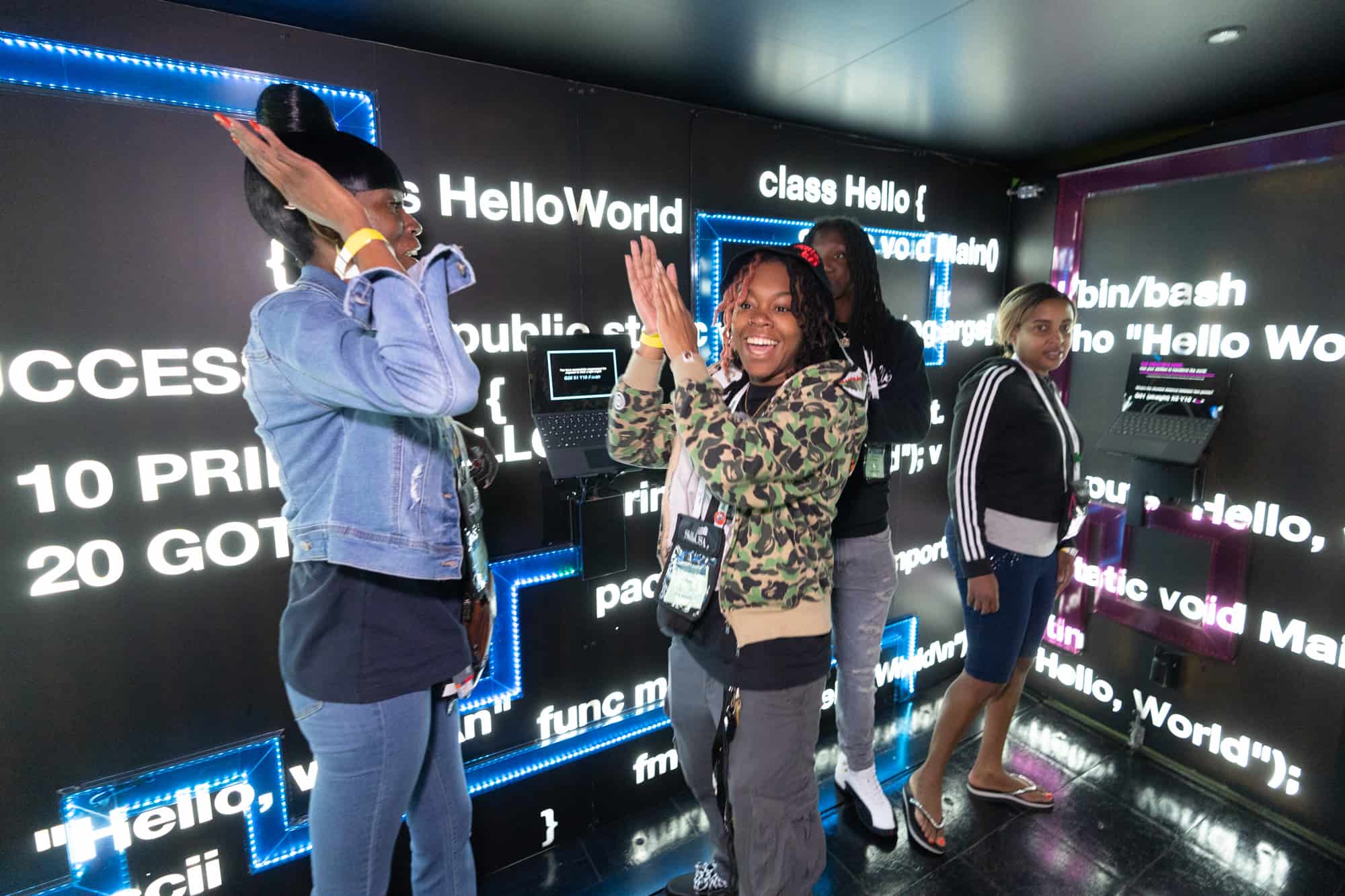
The Creators Wanted tour landed in Atlanta last week for the SkillsUSA National Leadership and Skills Conference—the largest gathering of the America’s future skills workforce.
Over the course of the three-day program, the tour, an initiative of the NAM and the Manufacturing Institute, helped change attitudes and challenge misconceptions about manufacturing, opening up a new world for some of the country’s most talented rising workers.
By the numbers: The tour’s SkillsUSA stop, sponsored by Honda, Snap-on, FactoryFix and Union Pacific, helped share the story of modern manufacturing with many of the brightest career mentors and technical education students in the United States.
- 15,000 people attended the event, including many career and technical education students, educators and parents.
- More than 1,500 people took part in the Creators Wanted immersive experience at SkillsUSA.
- More than 120,000 students and career mentors signed up to learn more about modern manufacturing careers during the tour stop in Georgia.
More participants: Other leading manufacturers were also in attendance, engaging students with information about careers in manufacturing. A few of the participants included Caterpillar, John Deere/Korematsu, Volvo NA Group, Vermeer Corp., Toyota, Cummins, Penske and 3M.
A special guest: Snap-on Chairman and CEO Nick Pinchuk dedicated a full day to inspiring students and educators. The NAM executive committee member and Manufacturing Institute board member emphasized the “Creators Wanted” mantra in order to remind participants that manufacturers aren’t just recruiting workers—they’re inspiring and empowering creators.
Local coverage: The visit made waves in Georgia, where it was covered on Fox 5’s Good Day Atlanta:
- “A huge turnout down here,” said Fox 5’s Paul Milliken, who had multiple live hits at the Creators Wanted immersive experience. “These students are so talented, so incredible … the future of America’s skilled workforce.”
- “This conference—it’s just a really incredible opportunity for these future workforce leaders to come together, meet each other, network and compete.”
WATCH: @GoodDayAtlanta's @PaulFromFox5 reports on #CreatorsWanted traveling to @GWCC_ATL for @SkillsUSA #NLSC23. Check out how we are working to inspire students to consider rewarding careers in modern manufacturing. https://t.co/0GAlhxDmTb pic.twitter.com/BFJeKyXS9G
— The NAM (@ShopFloorNAM) June 20, 2023
Overheard at the event: Plenty of participants shared their excitement, emphasizing opportunities to connect with employers, learn about new skills and find paths to future careers.
- “These are viable careers. They are jobs that you can make quite a bit of money right from the beginning, and at the same time you’re learning core skills that you can carry on for the rest of your life.”
- “We’ve got tons of jobs out there across the U.S. Everybody is looking for talented individuals.”
- “You can explore … different careers that you want to do, [to] help you become a more successful adult in the future.”
The big picture: Over the course of the Creators Wanted Tour, which launched a year and eight months ago:
- 4 million students and career mentors have signed up online to learn more about modern manufacturing careers.
- Over 10,000 students and more than 3,000 career mentors have participated in our immersive experience, with 84% reporting a significantly improved view of modern manufacturing careers.
- The tour has received $5.35 million in positive earned media and 150 million digital impressions.
Making an impact: “Interacting with the students, educators and caregivers, we could truly feel the impact we’re making,” said Chrys Kefalas, managing vice president of brand strategy at the NAM. “This isn’t just about changing minds—we’re creating dreams and altering life trajectories.”
What’s next: The tour keeps on rolling this fall to Minneapolis and St. Paul, Minnesota, and Circleville, Ohio. You can also keep an eye out for new online resources that are coming out this summer, or browse the more than 330,000 open manufacturing jobs and 150,000 training programs listed online.
Creators Wanted Makes an Impact at SkillsUSA

The Creators Wanted tour landed in Atlanta last week for the SkillsUSA National Leadership and Skills Conference—the largest gathering of the America’s future skills workforce.
Over the course of the three-day program, the tour, an initiative of the NAM and the Manufacturing Institute, helped change attitudes and challenge misconceptions about manufacturing, opening up a new world for some of the country’s most talented rising workers.
By the numbers: The tour’s SkillsUSA stop, sponsored by Honda, Snap-on, FactoryFix and Union Pacific, helped share the story of modern manufacturing with many of the brightest career mentors and technical education students in the United States.
- 15,000 people attended the event, including many career and technical education students, educators and parents.
- More than 1,500 people took part in the Creators Wanted immersive experience at SkillsUSA.
- More than 120,000 students and career mentors signed up to learn more about modern manufacturing careers during the tour stop in Georgia.
More participants: Other leading manufacturers were also in attendance, engaging students with information about careers in manufacturing. A few of the participants included Caterpillar, John Deere/Korematsu, Volvo NA Group, Vermeer Corp., Toyota, Cummins, Penske and 3M.
A special guest: Snap-on Chairman and CEO Nick Pinchuk dedicated a full day to inspiring students and educators. The NAM executive committee member and Manufacturing Institute board member emphasized the “Creators Wanted” mantra in order to remind participants that manufacturers aren’t just recruiting workers—they’re inspiring and empowering creators.
Read the full story here.
NAM Honors Vermeer’s Mary Andringa

When Mary Andringa arrived at NAM headquarters on Wednesday, she expected a tour of the renovated office. Instead, the former NAM Board chair was surprised by an applauding crowd who gathered for the ribbon-cutting for one of the NAM’s meeting rooms, now named the Mary Andringa Room in commemoration of her decades-long service to manufacturers in the U.S. The NAM’s conference rooms are named for many luminaries of manufacturing, including Andrew Carnegie, Thomas Edison, the Wright Brothers, Jonas Salk and Marie Curie.
“I was absolutely overwhelmed, humbled and honored,” Andringa said.
A longtime supporter: Now chair emeritus of Vermeer Corporation—a family-owned, midsized manufacturer of industrial and agricultural machines in Pella, Iowa—Andringa served as NAM Board chair from 2011 to 2013 and has been an active participant on the NAM Board since the early 2000s.
- Andringa found her experience as NAM Board chair deeply meaningful, remarking on the close relationship she developed with NAM President and CEO Jay Timmons, who was also newly appointed in 2011.
- “It was a really great experience because I had a few years under my belt as CEO [of Vermeer],” Andringa said, “and I could share best practices with Jay. It was great to see how he took initiative and dug into some areas that needed more cooperation, like the NAM’s partnerships with state associations.”
Visiting the Hill: Andringa said she “enjoyed being a voice for manufacturing” in meetings on the Hill and with several administrations.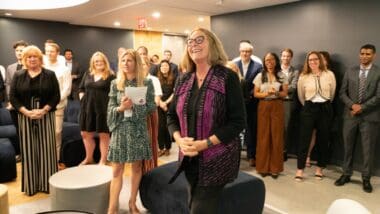
- Whether advocating against compliance regulations that created needless hardship for manufacturers, or for removing trade barriers impeding U.S. exports, Andringa stressed that she always made her case to policymakers on both sides of the aisle.
- “The NAM tries to be the voice of reason. … It has done a good job connecting with both parties and whoever is in the White House,” she said.
- She always felt that policymakers listened to her and took her opinions seriously, recognizing that her privately held, medium-sized company was “what America is all about.”
Workforce, workforce, workforce: The importance of training more skilled workers has remained constant throughout Andringa’s career as a manufacturer and advocate for manufacturing.
- One of the highlights of her time at the NAM, she said, was seeing the rise of the Manufacturing Institute, the NAM’s 501(c)3 workforce development and education affiliate, on whose board she now serves.
- Andringa is impressed particularly with the MI’s stellar outreach, which includes webinars that help manufacturers recruit workers from populations they might not be familiar with, such as people with criminal records.
Her story: Andringa understands the importance of workforce education and training firsthand, having worked as a teacher before joining her family’s company back in 1982.
- After starting out at Vermeer in human resources, then moving to the advertising department, she became deeply involved in manufacturing operations.
- Looking back at her years as COO, then co-CEO with her brother and finally solo CEO, she is proudest of two accomplishments: championing lean manufacturing, which the company has now practiced for 25 years, and working with her family members to create a solid governance structure to avoid the difficult leadership transitions family firms often face.
- And to take things full circle, Andringa also exercised her commitment to education at Vermeer, ensuring that its team members have many opportunities for training and advancement.
Lasting ties: Andringa has many fond memories of her work with the NAM, including the time in 2008 where she and other NAM representatives unexpectedly found themselves talking with President George W. Bush.
- She recalls that Timmons encouraged her to talk to the press afterward, which taught her an important lesson: that you must always come prepared with a short pitch that will get your story across quickly, because storytelling is all-important.
The last word: When asked which accomplishment at the NAM she is most proud of, Andringa responds “encouraging and supporting the NAM team … which is very intentional and very dedicated to manufacturers.”